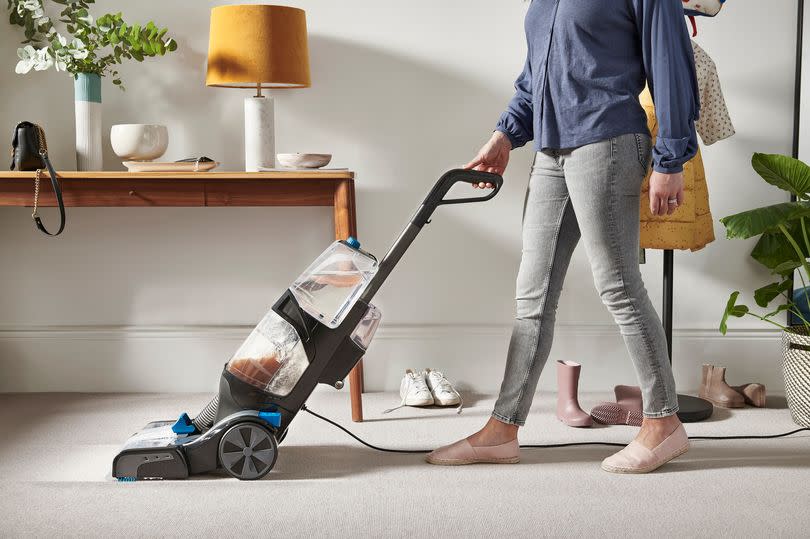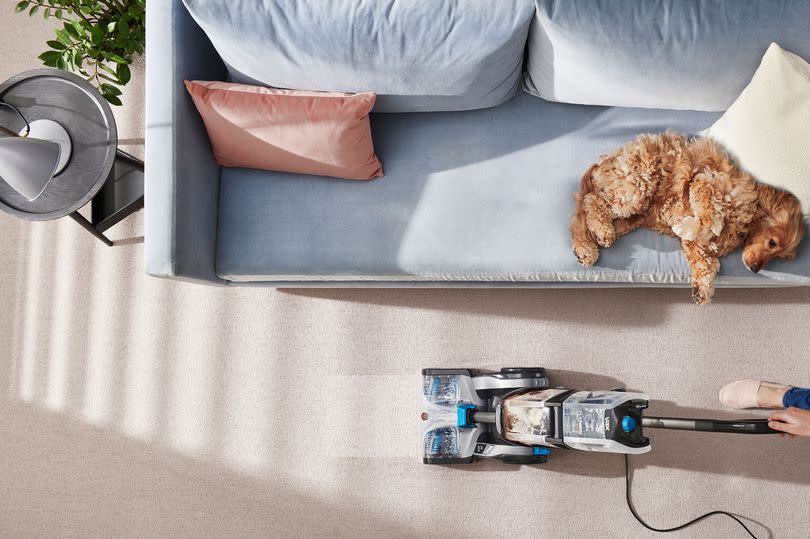Grim bacteria lurking in your carpets include E.coli and Salmonella

Your carpets may look pristine and may even have been cleaned recently. But beware – that doesn’t mean there’s nothing nasty lurking beneath the surface.
In a recent study, Factory Direct Flooring and microbiology lab BioLabTests analysed 100 swabs taken from floors in UK homes and found bedrooms have the filthiest carpets, rife with Staphylococcus bacteria, which can cause infections in humans. Hall and stairs carpets were found to be the next dirtiest, with mould bacteria more prevalent, followed by the living room, and home offices, with the kitchen/dining room being the cleanest. The most common bacteria types found on carpets were yeast and mould, followed by Staphylococcus and Bacillus.
“Our study’s findings prove that just because a floor may look clean, it doesn’t necessarily mean it is,” said Paul Hambidge, managing director of Factory Direct Flooring. “Some dirt and grime can be visible to the naked eye, but many bacteria types only reveal themselves under a microscope or when properly monitored under lab conditions. Of all the bacteria types we found on floors, Streptococcus was the hardest to budge, regardless of the technique we tested.”
Dr Primrose Freestone, an associate professor of clinical microbiology at the University of Leicester, explains that what’s on your shoes, feet, pet’s paws or what blows in through the window will end up on your carpet.
“That can include faecal matter if you have pets, and if you’ve got cat litter, it will have actually spread out around your rooms – it’s amazing that carpets don’t smell more,” she said. “The weave of carpets and rugs may act as a sink for a whole range of pollutants and allergens – the fact is that your carpet is a reservoir of potential infection.”
Dr Freestone says nasties in carpets can include food debris, skin cells, house dust mites, faecal droppings, insects such as carpet bugs or ants, pollen, bacteria such as E. coli, Salmonella, Staphylococcus aureus (including MRSA), and Listeria, viruses, mould under the carpets (if there’s damp), mould spores, dirt and dust, and these carpet pollutants may become airborne during vacuuming or even just walking on the carpet.
Studies suggest an adult human walking across a floor can cause the resuspension in the air of 10–100 million dust particles per minute, said Dr Freestone, who pointed out that carpet allergens have been shown to exacerbate lung conditions such as asthma. The American Lung Association recommends against wall-to-wall carpets in favour of easier-to-clean and less allergen or pollutant-trapping hard flooring.
Certain carpet types, such as shag-pile, as well as carpets older than 10 years, may have trapped higher levels of pollutants and allergens over time, especially if they haven’t been regularly disinfected or steam cleaned. Research has found most carpets and rugs have fungi and fungal spores in them long-term, as well as yeast, which can grow on any food debris present.
“Cleaning up food spills will still leave microscopic traces, which microscopic life forms such as fungi and bacteria can eat, which then allows them to increase in numbers, especially if carpets are in any way damp,” said Dr Freestone, who added that how long any potential pathogens in carpets persist depends on carpet moisture, food traces and cleaning.
How often should you clean carpets and rugs?
The Factory Direct Flooring study found vacuuming reduced bacteria on carpets by 67% on average and was especially effective on living room carpets, where it cut germs by 88%. But bedroom carpets were the hardest to clean – vacuuming here only reduced bacteria by 53%.
Faye Doolittle, senior product manager at VAX, points out that while vacuuming to remove surface dirt and debris is a regular household task, carpet washing is often lower down the cleaning agenda.
“But it shouldn’t be,” she said, “as deeper down in the carpet pile, bacteria that is invisible to the naked eye can lie undetected, generating unpleasant odours.”

Doolittle says wearing shoes inside leads to the transfer of dirt and bacteria from outdoors into your home. “A shoes-off policy is the best line of defence, but not everyone will stick to that and certainly some pets like cats come and go as they please,” she pointed out.
“So we recommend a regular deep clean of carpets to agitate and lift stubborn dirt from your carpet, cleaning deep down into the fibres to remove ingrained stains and help prolong its life. Washing your carpets every two to three months with an antibacterial solution will help kill bacteria and remove stains, dirt and pet messes, leaving them revitalised, as well as ensuring your carpets keep their appearance for longer.”
Dr Freestone said just vacuuming carpets will remove biological particles like pollen, dried faecal matter, dust mites and fungal spores, as well as dirt and dust. “However, bacteria and fungi attached to carpet or rug weaves may need more rigorous cleaning,” she said, pointing out that high-temperature steam (100C) is an effective disinfectant, as is wet cleaning with detergent and bleaches.
“Ideally, you should vacuum thoroughly at least once a week, or more if the carpet has lots of tread (children or pets), and more thoroughly clean maybe every one to three months,” she recommended. But don’t worry if you don’t clean your carpets or vacuum as often as recommended – the good news is that our immune systems are robust enough to handle most of the carpet nasties.
Dr Freestone said: “How do we get away with not cleaning or vacuuming our floors so often? The answer is simply that we’ve got an immune system that evolved when we were living much less clean lives. The fact is we can live in such an environment because our immune systems are so incredibly protective, robust and powerful.”
However, she warned that if someone who lives in the house has a compromised immune system, perhaps from a disease like HIV, or cancer treatment, carpet and floor cleaning needs to be far more rigorous. “You have to up your hygiene standards if someone in your house is immunocompromised.”
She added: “The health implications of what’s trapped in carpets are not yet fully understood, but if your carpet hygiene standards keep your family healthy and relatively free of infections or allergies, then keep on with whatever you’re doing, your immune system is sufficiently strong enough to cope with the infection challenge of a germ-colonised carpet.”

 Yahoo News
Yahoo News 
